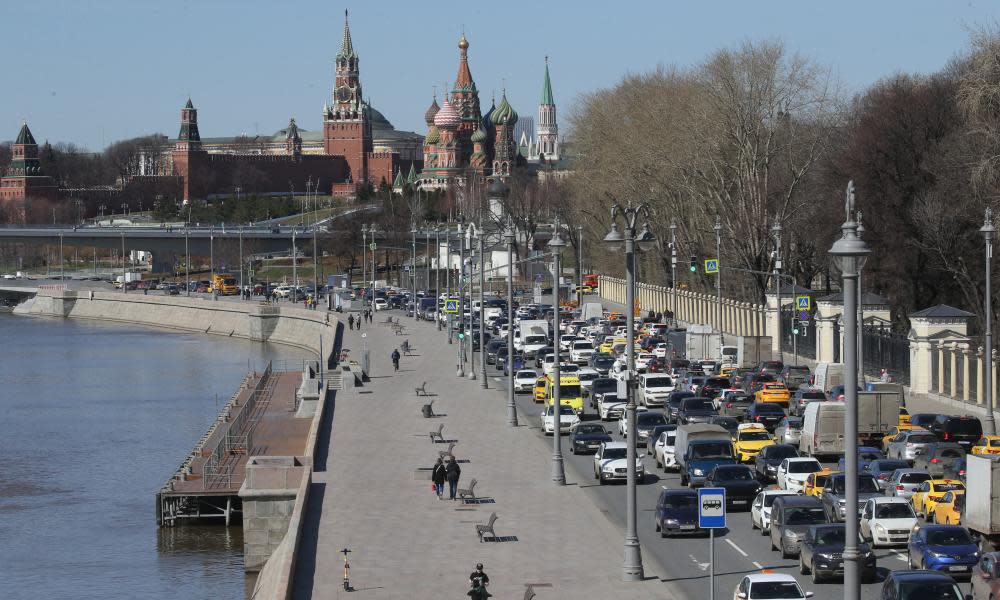Major cities blighted by nitrogen dioxide pollution, research finds

Cities in relatively prosperous countries are blighted by serious levels of air pollution from nitrogen dioxide, often without realising the extent of the problem, research has found.
Moscow is the world’s second worst city for nitrogen dioxide pollution, behind Shanghai in China, while St Petersburg takes fourth place. Other cities near Russia follow close behind, including Ashgabat, capital of Turkmenistan, and Minsk, capital of Belarus, at seventh and eighth place respectively, according to the research, published on Wednesday.
Pallavi Pant, senior scientist at the Health Effects Institute in the US, who oversaw the research, said: “Finding several Russian cities at the top of the list [for NO2 air pollution] was definitely surprising for us. It is likely to mainly come from traffic pollution and a vehicle fleet that is older.”
Other cities worst affected by NO2 pollution included Tehran in Iran, Cairo in Egypt, Istanbul in Turkey and Ho Chi Minh City in Vietnam.
While the problem of particulate pollution – caused by very fine pieces of soot or debris, mostly from burning and some industrial sources – has been an increasing cause of concern around the world, the problem of nitrogen dioxide (NO2) pollution has been less well studied, with limited on-the-ground monitoring stations capable of detecting the gas.
Scientists from the Health Effects Institute in the US used satellite data, along with on-the-ground read-outs, to compile a global picture of fine particulate (PM2.5) and NO2 air pollution in more than 7,000 cities globally, for the State of the Global Air report.
They found that while poorer countries tended to be plagued by pollution from particulates – very fine pieces of unburnt carbon or debris, mostly from burning or industrial sources – the problem of NO2 pollution was less well studied.
The worst cities for particulate pollution – which can come from coal-fired power stations, the burning of waste and agricultural burning, as well as from vehicles – were Delhi and Kolkata in India, followed by Kano in Nigeria and Lima in Peru. South Asia and Africa dominated the Top 10, with Dhaka, Karachi and Jakarta, Lago and Accra also on the list, while Beijing was ninth worst globally.
Robert O’Keefe, the vice-president of the Health Effects Institute, said: “China has continued to make progress this decade on air pollution. It shows that there is hope, things can go in the right direction, though this is a long-term trip.”
According to the report, 18 of the top cities showing the steepest declines in NO2 exposure over the past decade were in China.
NO2 is not as closely linked to mortality as particulate pollution, but can cause a variety of respiratory problems, including the onset of asthma in children, and exacerbate breathing difficulties for those already susceptible. Deaths have been linked to the pollution, though on a lesser scale than pollution caused by particulates.
Vehicles are the main source of nitrogen dioxide pollution, and older vehicles produce far more than more modern models.
The State of the Global Air report is published annually by HEI.
It has previously found that air pollution, both outdoor and indoor, was so widespread that nearly all people experienced it in some form, and that babies were dying across the world from it. This year’s edition focused on NO2 for the first time as scientists were concerned about the lack of knowledge of the issue.
While about 117 countries have ground-level monitoring systems to track PM2.5, only 74 monitor NO2.
This year’s study focused on NO2 levels from 2010-2019, to give a picture of the underlying problem of air pollution, avoiding the effect of the Covid-19 lockdowns.
The authors also estimate that in 2019, at least 1.7 million deaths linked to PM2.5 exposure occurred in the 7,239 cities they covered. The impact was worst in Asia, Africa and eastern and central Europe.

 Yahoo Movies
Yahoo Movies 
